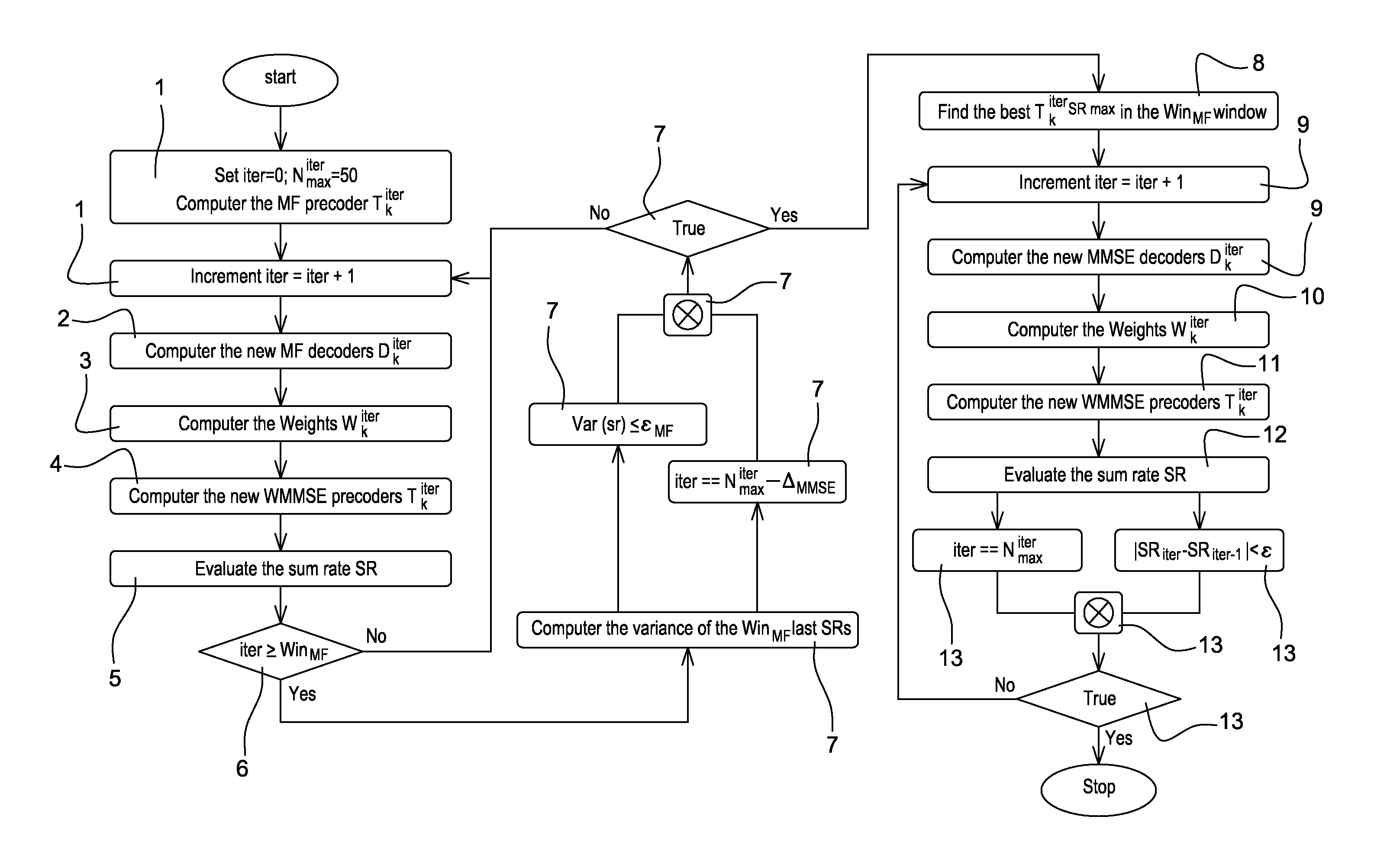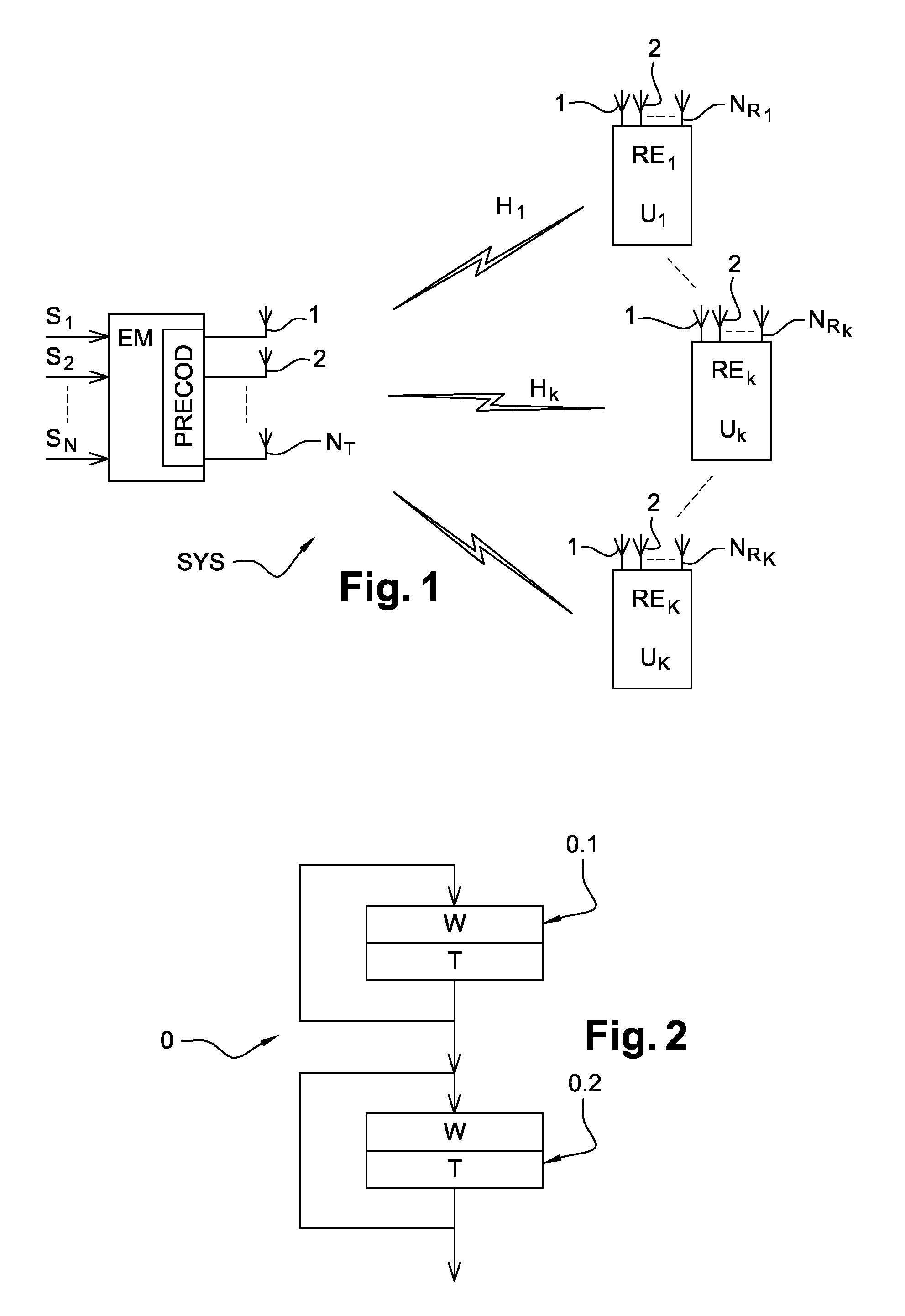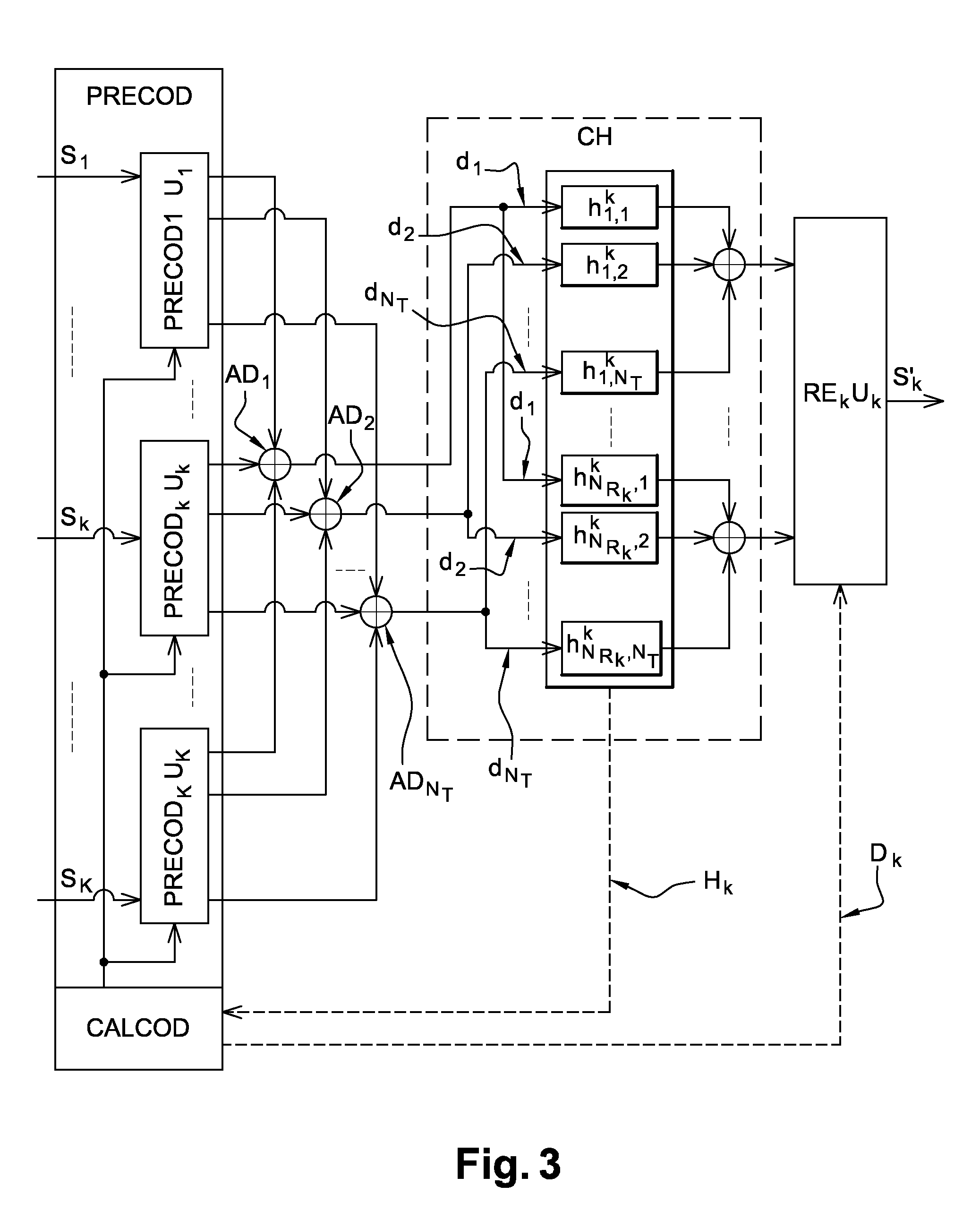Double-iterative method of transmitting multiple streams per user in a multi-user MIMO system, and a corresponding transmitter, computer program product, and data medium
a multi-user, multi-user technology, applied in the field of digital communication, can solve the problems of insufficient optimization of the receiver on its own, insufficient extraction of maximum sr, and difficulty in determining the best way of allocating, so as to achieve the effect of better maximization of the transmission rate of the system
- Summary
- Abstract
- Description
- Claims
- Application Information
AI Technical Summary
Benefits of technology
Problems solved by technology
Method used
Image
Examples
Embodiment Construction
[0079]The diagram of FIG. 1 shows a prior art multi-stream multi-user linear MIMO system. The system SYS comprises a transmitter with a precoder PRECOD made of K precoders at the base station, and K receivers with the users, all of which receivers are of linear structure. The transmitter is connected to NT transmit antennas. The receiver of user k is connected to NRk receive antennas. The broadcast channel from the transmitter to the receivers is represented by K transmission channels of matrix Hk.
[0080]The diagram of FIG. 2 is a flow chart of a method 0 of an embodiment of the invention. The multi-stream transmission method for transmitting N data streams allocated to K different users is implemented by a transmitter for a multi-user MIMO system having NT transmit antennas and
∑k=1KNRk
receive antennas associated with K receivers associated respectively with K users. The method comprises:[0081]a succession of two different iterative algorithms (0.1, 0.2) for calculating K precoding m...
PUM
 Login to View More
Login to View More Abstract
Description
Claims
Application Information
 Login to View More
Login to View More - R&D
- Intellectual Property
- Life Sciences
- Materials
- Tech Scout
- Unparalleled Data Quality
- Higher Quality Content
- 60% Fewer Hallucinations
Browse by: Latest US Patents, China's latest patents, Technical Efficacy Thesaurus, Application Domain, Technology Topic, Popular Technical Reports.
© 2025 PatSnap. All rights reserved.Legal|Privacy policy|Modern Slavery Act Transparency Statement|Sitemap|About US| Contact US: help@patsnap.com



